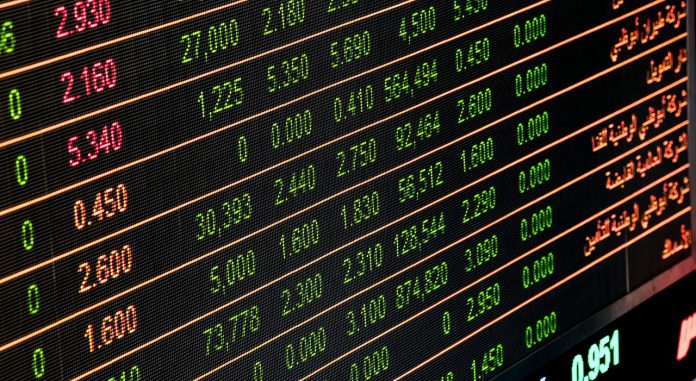Are you new to the world of currency trading? If so, you’re likely overwhelmed by all the terminology, concepts and processes associated with Forex trading. Fortunately, getting started in this exciting arena can be simple and easy.
In this article, we’ll introduce the world of currency exchange – from what Forex (foreign exchange) is and how it works to understanding different types of orders and other practical terms for successful trading. Get ready to learn about risk management strategies and helpful indicators that can put even beginners on their way towards benefiting from one of the most popular markets around.
What is Forex Trading and How Does it Work
Forex trading, or foreign exchange trading, refers to the buying and selling currencies to make a profit. This international market operates 24 hours a day, five days a week, and is the biggest financial market in the world, boasting an average daily turnover of over $5 trillion. Forex traders use a variety of strategies and tools to predict the rise and fall of currencies, taking advantage of small shifts in exchange rates to make a profit.
The process can be complicated, but understanding the basics is essential to making informed decisions. Forex trading is an exciting and potentially lucrative way to invest in the global economy, but it requires patience, discipline, and a willingness to learn.
Benefits of Forex Trading
One of the primary benefits of Forex trading is that it offers traders the opportunity to make money regardless of economic conditions. As global currencies fluctuate in value, experienced traders can take advantage of any currency’s positive or negative movements to create profits. Additionally, Forex trading is accessible: anyone with access to a computer and an internet connection can get started.
Finally, there are numerous resources available for Forex traders who want to become successful. In particular, Malaysia has some of the best Forex brokers in the world, allowing everyday investors to access knowledgeable professionals who can help them make informed decisions about their investments, so ensure you check out the best Forex broker in Malaysia.
Understanding the Different Types of Currency Pairs
The commonly traded currency pairs are called “majors” in the Forex market. These include EUR/USD (the euro against the U.S. dollar), GBP/USD (the British pound against the U.S. dollar), USD/JPY (the U.S. dollar against the Japanese yen), and USD/CHF (the U.S. dollar against the Swiss franc).
It’s essential to recognize that each currency pair has its characteristics, providing various opportunities for traders with different risk profiles and trading goals. As you become more experienced, you may want to explore “minor” or “exotic” currencies such as the Turkish lira or South African rand.
Analyzing Market Conditions to Make Informed Decisions
Forex traders must understand market conditions, such as the strength of different currencies and other factors like political stability, interest rates and economic growth. Several indicators can be used to analyze current trends, including technical analysis tools like moving averages and oscillators. Additionally, the fundamental analysis examines the broader macroeconomic environment to identify potential trading opportunities.
By analyzing market conditions and understanding how different currencies interact, you can learn to make more informed decisions when it comes to trading in the Forex market.
Practising With a Forex Demo Account Before Trading in Real Markets
Although Forex trading can be profitable, it is essential to remember that the market can also be unpredictable. As such, it is strongly recommended that new traders start practising with a demo account before attempting to trade in actual markets.
Demo accounts allow traders to become familiar with the interface of their chosen brokerage and simulate trades without risking any capital. It allows you to see how different strategies work and helps you gain confidence in your decision-making process. Once you feel comfortable trading with a demo account, you can move on to live trading and potentially profit from your investments.
Setting Up Stop-Loss and Take-Profit Orders to Maximize Profits and Minimize Losses
No matter your trading strategy, it is essential to set up stop-loss and take-profit orders. Stop-loss orders limit the losses a trader can sustain on any particular trade, while take-profit orders allow traders to secure profits on successful trades.
By setting these limits in advance, traders can ensure their risk is managed effectively and their potential returns maximized. Additionally, careful use of these features can help traders easily monitor their current positions’ performance without manually closing them out at the appropriate time.
Constantly Reviewing Your Performance and Learning From Your Mistakes
Successful Forex trading is not just about understanding the markets and making profitable trades – it’s also about learning from your mistakes. As such, traders must review their performance regularly and maximize their trading opportunities.
It can involve assessing past trades, identifying areas where you may have gone wrong and learning from them to improve future results. Additionally, new traders should take advantage of any educational resources offered by their chosen broker and stay up-to-date with market news to keep up with industry changes. By taking these steps, you can ensure that your trading knowledge remains current and that you are doing all you can to maximize your returns in the Forex market.



 Bitcoin
Bitcoin  Ethereum
Ethereum  Tether
Tether  XRP
XRP  Solana
Solana  USDC
USDC  TRON
TRON  Lido Staked Ether
Lido Staked Ether  Cardano
Cardano  Avalanche
Avalanche  Toncoin
Toncoin